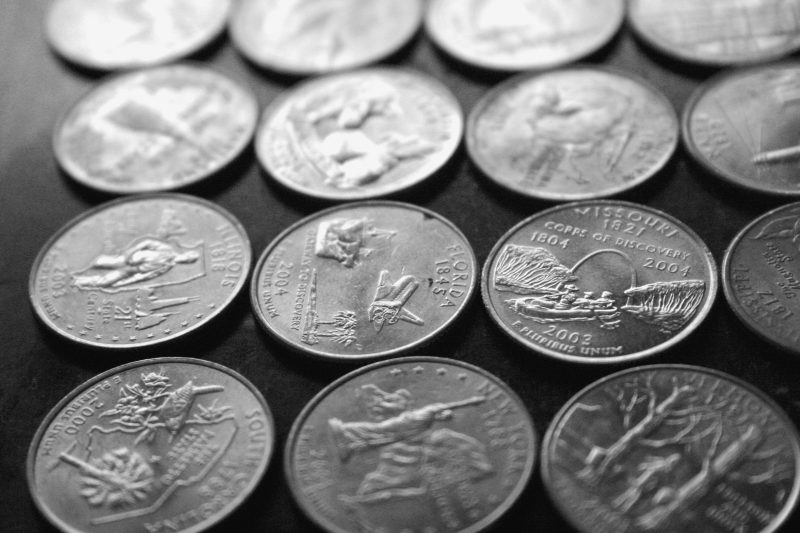
(NEXSTAR) — It’s been 25 years since the U.S. Mint began producing arguably the most-collected coins: the 50 State Quarters.
Just as the name implies, every state got its own quarter, sporting a design on the reverse reflecting an important feature, historical moment, or tagline (or, in some cases, all three). From 1999 to 2008, the U.S. Mint released five new quarters a year, following the order in which the states ratified the Constitution or were admitted to the Union.
The first quarter released was Delaware, which features Caesar Rodney riding horseback on the reverse. It pays tribute to Rodney’s crucial 80-mile ride to cast his vote in favor of “The First State” signing the Declaration of Independence, the Mint explains. The final quarter was Hawaii, which features Hawaiian monarch King Kamehameha I and the eight major islands.
While every state has a quarter, some are easier to find than others.
In total, 34.3 billion quarters were produced and shipped as part of the 50 State Quarters Program. During the program, the Mint’s average annual mintage reached 3.5 billion quarters, 135% more than the average production during the previous years “to fulfill rising demand.”
A spokesperson for the Mint previously told Nexstar that the quarters were produced “to demand in concert with the Federal Reserve.” At least 400 million of each quarter was minted, according to records.
More of the quarters released early in the program, like Delaware, were minted than others. A report from the Mint points to Y2K-related concerns in the late 1990s, followed by a slowing economy in 2001 for the production differences.
The interactive map below shows the number of state-specific quarters that were produced and distributed.
As you can tell (based on the dark blue shade), you’ll have a better chance of finding Virginia quarters than any others. There were nearly 1.6 billion 25-cent pieces produced, all sporting “the three ships that brought the first English settlers to Jamestown.” Only seven other state quarter designs had more than 1 billion issued: Connecticut, South Carolina, New York, Maryland, New Hampshire, Massachusetts, and North Carolina.
While many state quarters remain in circulation, according to the Mint, some may be harder to find. A dozen – primarily states in the Midwest and the South – had less than half a billion quarters put into circulation. These five state quarters may be the hardest to find based on mintage data:
- Oklahoma: 416.6 million minted
- Maine: 448.8 million minted
- Wisconsin: 453.2 million minted
- Missouri: 453.2 million minted
- Alabama: 457.4 million minted
Other state quarters with less than half a billion minted include Arkansas, Michigan, Illinois, Iowa, Florida, Minnesota, and New Mexico.
Unfortunately, if you’re hoping to finish your quarter collection, you’ll have to keep searching: the Mint no longer produces the state designs.
The ones you are able to find, however, may be worth more than their intended 25 cents.
Those that are in mint condition and marked with a D or P (meaning they were produced in Denver or Philadelphia) could be worth as much as $3.50 if they have a certain state design, according to Coin Trackers. Ohio quarters marked with an S (produced in San Francisco) can carry the highest value at $15.
Of the less-minted states listed above, only a few are listed among the most valuable. A mint-condition Oklahoma or New Mexico quarter marked with an S could be worth up to $10. There are multiple other factors, like defects, extra leaves, or whether it’s silver-proof, that can increase a state quarter’s value, including those that are in circulation.
How can you tell if your quarter or any money you’ve been collecting is worth more than its minted value?
“The answer is not always obvious,” Dustin Johnson, Vice President of Numismatics (the study or collection of coins, paper money, and medals) at Heritage Auctions previously explained to Nexstar. “Odd items are always set aside but that doesn’t make them rare or terribly valuable.”
Copyright 2024 Nexstar Media Inc. All rights reserved. This material may not be published, broadcast, rewritten, or redistributed.














